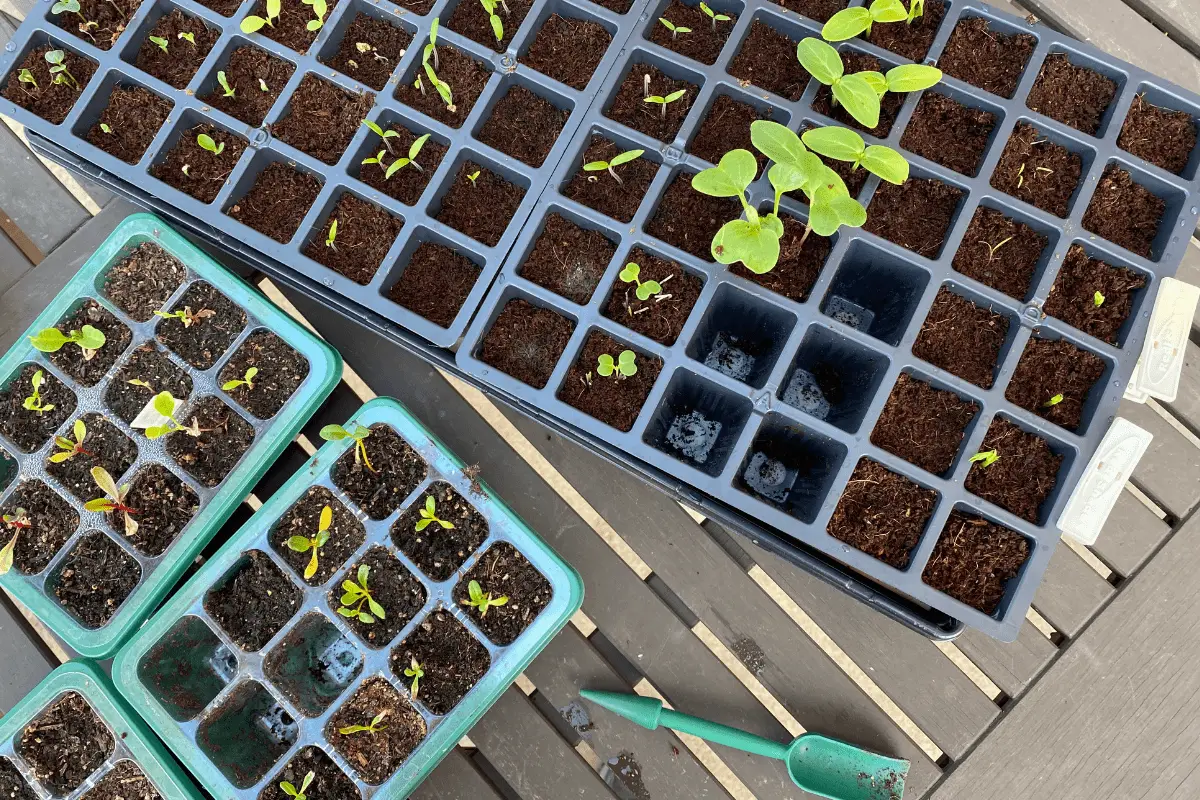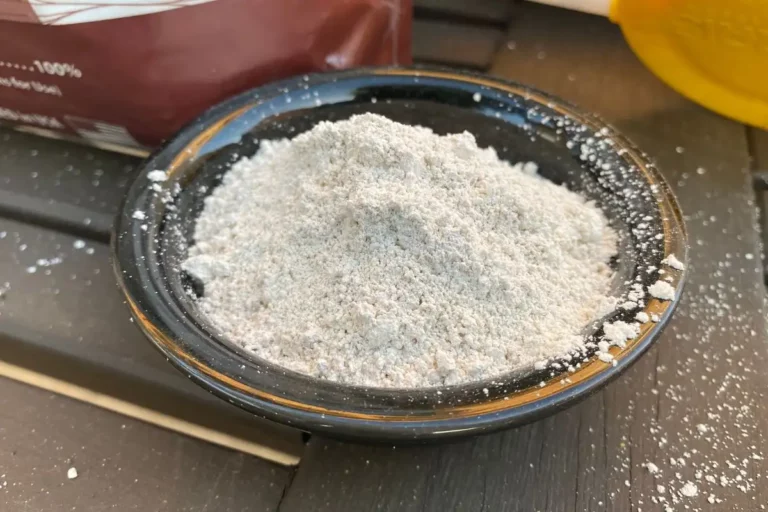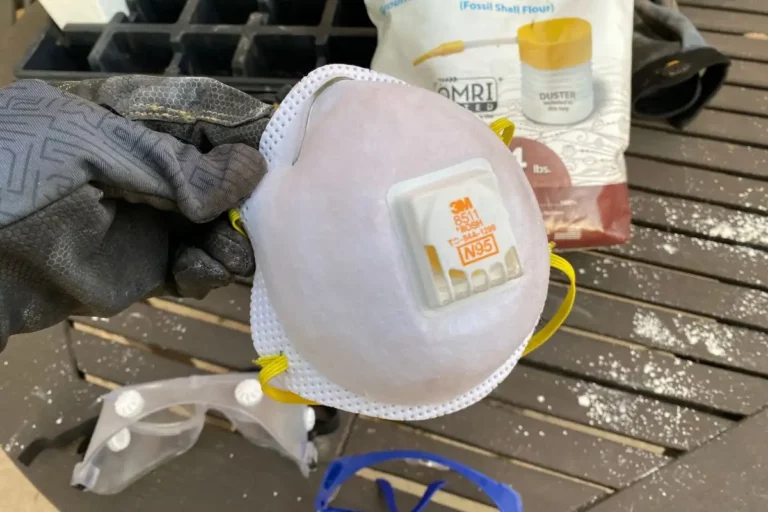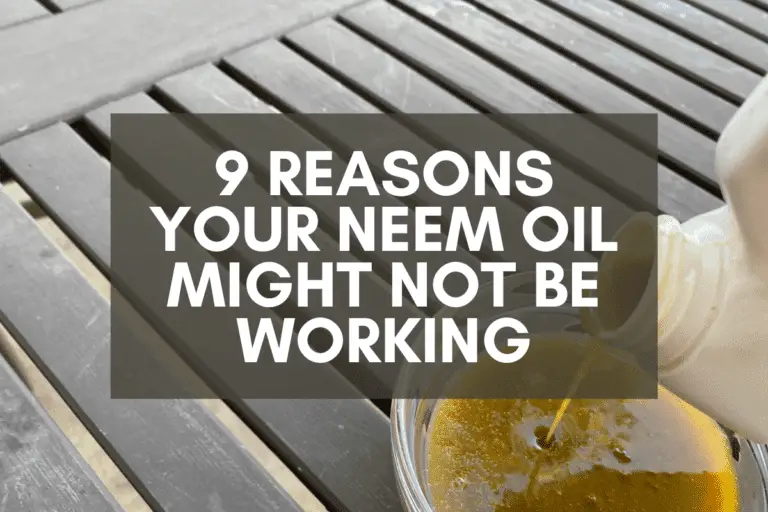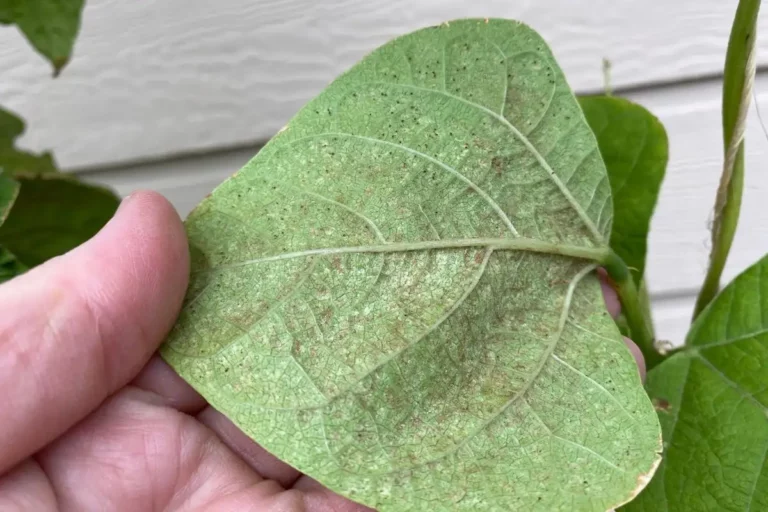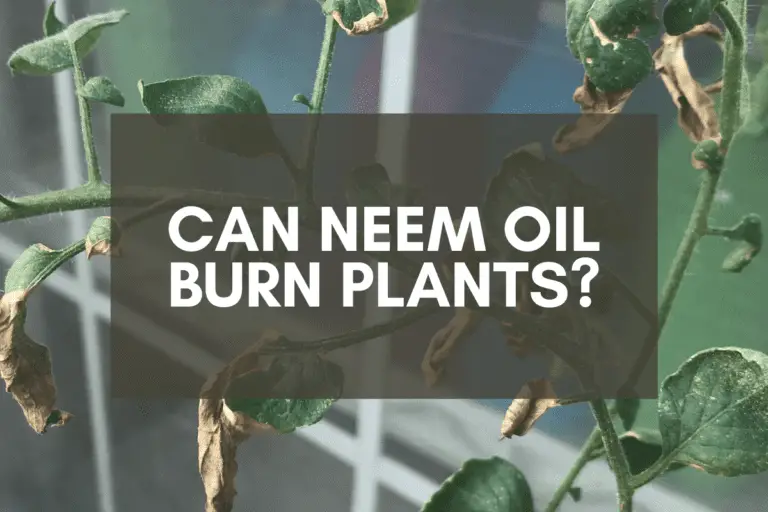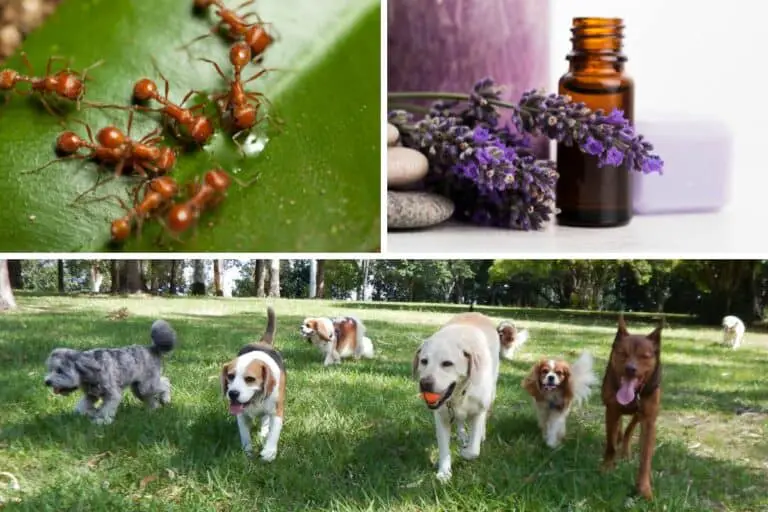Using Neem Oil on Seedlings: 7 Things to Keep in Mind
If you’ve ever grown plants from seed, you’ve likely dealt with a few headaches when doing so: aphids that arrive and start attacking your plants, gnats that won’t seem to go away, fungi and mold that appear atop your soil, and viruses that kill off new seedlings.
It can be a bit frustrating when things don’t turn out as expected with your seedlings, which I saw firsthand last season when I lost several tomato seedlings (to damping off disease) and pepper seedlings (to aphids).
I’ve used neem oil in my garden for years but never with young, immature plants, so that experience made me wonder: Is neem oil safe for seedlings?
Generally speaking, neem oil is safe for most seedlings. Applied as either a light foliar spray or soil drench, neem oil will kill off aphids and gnats, neutralize mold spores, and rid seedling trays of soil-borne fungi that cause damping off disease.
Disclosure: This post may contain affiliate links to some of my favorite products found on Amazon and other retail sites. I’ll earn a small commission from purchases made through those links, at no additional cost to you. Please read my product disclosure page to learn about the care I take when recommending products to my readers.
I explain everything you’ll need in detail below, but if you want to do what I do to protect my plants, you’ll need these products (or products like them):
- A ½ gallon (2 liter) garden sprayer that you can fill with water. For smaller gardens, you can get by with a .2 gallon (.75 liter) garden sprayer.
- You’ll need to purchase a good cold-pressed neem oil. I’ve used Verdana and Neem Bliss with success, but any cold-pressed neem oil will work just fine.
- Dr. Bronner’s Peppermint Castile Soap is necessary for emulsification. You can use any liquid soap, but I prefer Dr. Bronner’s over all others.
If you’re new to using neem oil in your garden and would like to learn more about it, I’ve included links throughout this article to other articles I’ve written about my experiences using neem oil.
Is Neem Oil Safe for Seedlings?
To begin with, I like to figure out what’s going on with my seedlings before I turn to neem oil. I ask myself questions like:
- What’s wrong with my plants?
- What’s causing these problems?
- What should I do next?
Questions like these help me think through the issues I’m seeing and thus better understand where things stand with my plants.
As anyone who’s ever gardened knows, bug infestations can quickly get out of hand. If you’re not proactive when invasive pests arrive, you might find yourself on the end of a losing battle. The same goes for plant diseases as well.
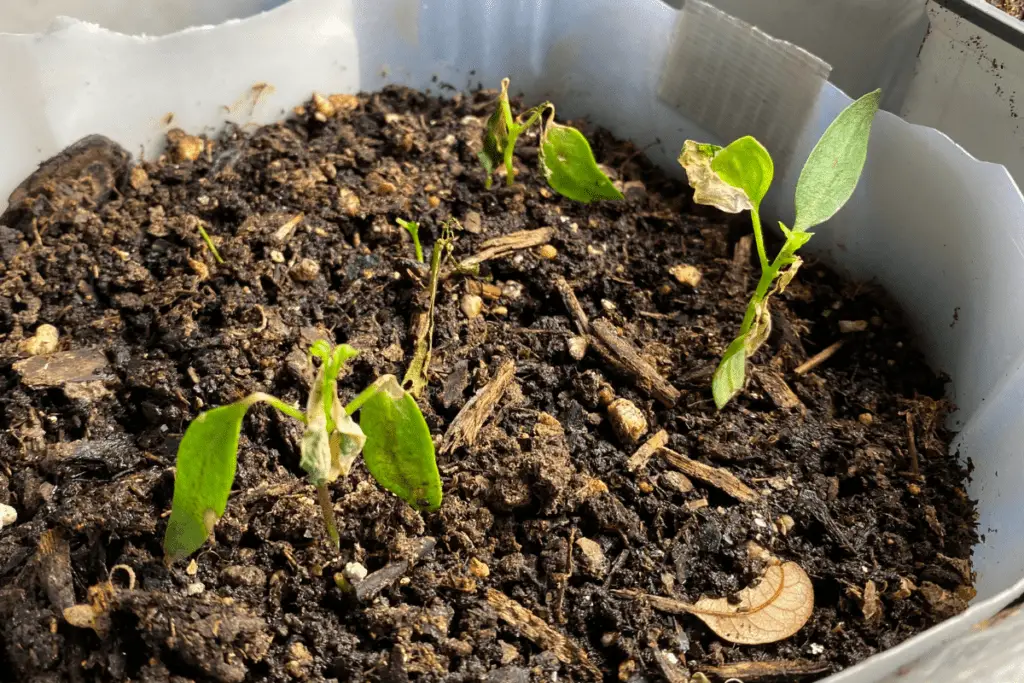
As I noted at the beginning of this article, I know what this feels like. A few years back, I lost quite a few tomato plants to spider mites. I didn’t pay close enough attention to the early warning signs, and I was caught by surprise when spider mites arrived out of nowhere and started spreading from plant to plant.
I eventually fought them off with neem oil and insecticidal soap, but it was a massive headache, and I eventually had to pull up several heavily infested tomato plants and toss them in the trash because they were no longer worth saving.
Something similar happened with my pepper seedlings this year. I didn’t notice the arrival of aphids, and by the time I realized that they had made their way into my garage and onto my seedlings, the aphids had destroyed quite a few of my young plants.
Long story short, problems can quickly worsen regardless of whether your plants are seedlings or fully grown, but seedlings are particularly susceptible to pests and disease since they’re so small and have weak root systems.
Knowing this, here are the steps I follow when I see a problem with my seedlings and think that neem oil might be the way to go:
1. Diagnose the Problem
If I’m having problems with my seedlings, I want to determine exactly what’s going wrong so that I can take the right precautions to protect them.
Here are the most likely culprits when it comes to seedling damage:
- Aphids: These can creep in almost anywhere and ruin young plants if you’re not paying close enough attention. They can travel on tools, clothes, and gloves. They can even be spread by crawling or via strong gusts of wind.
- Damping Off Disease: This is a soil-borne fungus that causes damage to seedling stems and ultimately kills the seedling.
- Fungal Growths: Beyond the fungi which cause damping off disease, other fungi might become apparent as your plants start to develop. Most are relatively harmless, but you’ll want to play it safe and address the underlying problem.
- Gnats: You can usually ignore a few gnats around your seedlings, but if your gnat problem worsens, that could be a sign that you need to act.
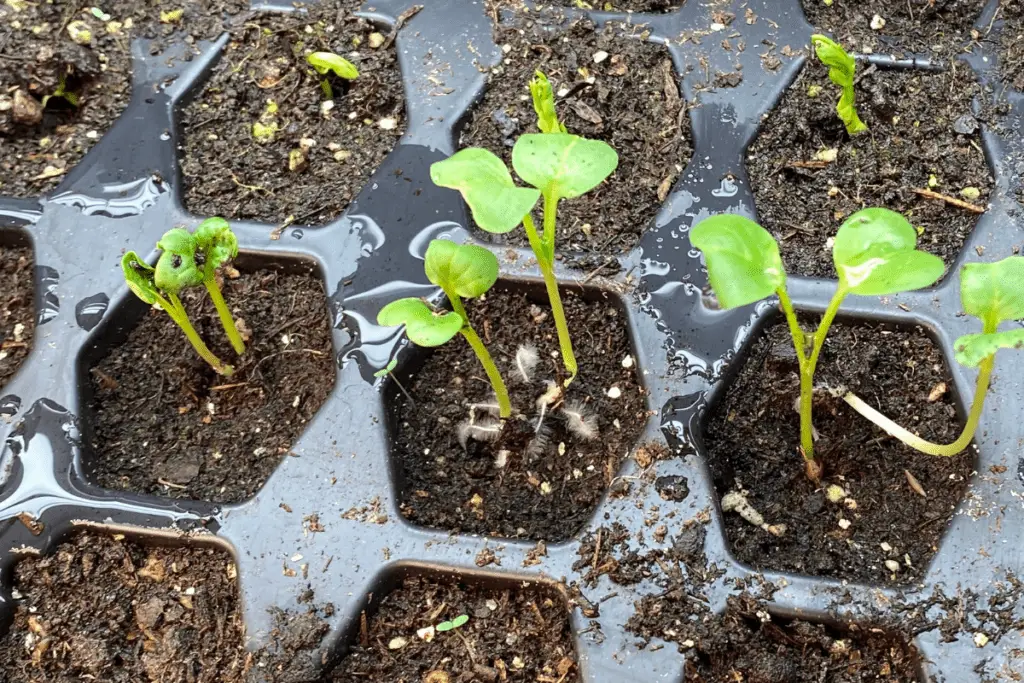
There are many other reasons why seedlings don’t thrive–including problems with germination, lighting, moisture, and overcrowding–but you really only need to turn to neem oil for help if you notice one of the above problems.
2. Consider Your Options
But here’s one more thing to consider before you turn to neem oil: What other options are there?
For example, if you’ve got aphids amidst your seedlings–and if you’d prefer to wait on neem oil until the seedlings are a bit older and stronger–you might consider an alternative like insecticidal soap spray.
This is what I did with my damaged pepper plants. Several plants were damaged beyond recovery, but 2 of them looked like I could salvage them if I got rid of the aphids in time.
I used an insecticidal soap spray because I wanted to be as careful with the damaged seedlings as possible, and within a couple of days, the aphids were gone. I wasn’t sure if the plants would make it, but over the course of the next few days, I noticed new, tiny leaves appearing. Within a few weeks, the plants were looking just as they had before the aphids arrived, and I ended up saving both.
3. Take Note of Plant Size and Type
When it comes to applying neem oil to plants, here’s what I go by: The smaller the plant, the lighter the application.
In their earliest developmental stage, many seedlings will have only had time to form cotyledons. These are the first two leaves that appear when the plant breaks the surface of the soil. They always look different than the plant’s regular leaves, and their job is to soak up light and give the plant a nutrient boost to help it develop.
Generally speaking, I rarely apply neem oil to seedlings when all that’s visible are the cotyledons. I usually wait for the first true leaves to appear before I consider treating with neem oil.
I also give some thought to the types of seedlings I’ve got. Some plants (like tomatoes) do great with neem oil. Other plants are wispy and delicate, and neem oil might not be right for them.
If you’re concerned about what might happen, I recommend applying neem oil carefully to 1-2 seedlings, then see how they do. If they do just fine, I think it’s safe to assume that most of your seedlings will tolerate neem oil just fine.
4. Diluting Neem Oil: Err on the Safe Side
When a seedling has cotyledons, its root system has only just begun to form. If you feel the need to use neem oil, you’ll want to use a lighter-than-normal dilution following the instructions I’ve provided in the next section of this article.
If things go well, you can always increase the strength of your neem oil application a bit as the seedlings continue to grow.
One additional thing: Don’t attempt to store and reuse neem oil. Once you dilute it, you need to apply it to your plants within an hour or so. If you have leftover neem oil after you’ve applied it to your seedlings, I recommend treating it like a soil drench and pouring it out somewhere in your garden.
It’s not going to hurt your soil, and it’ll even kill off harmful nematodes if there happen to be any in the place where you pour it.
The next time you need to apply neem oil to seedlings, simply adjust how much you make given your experiences the first time, and you won’t have leftover neem oil spray to get rid of.
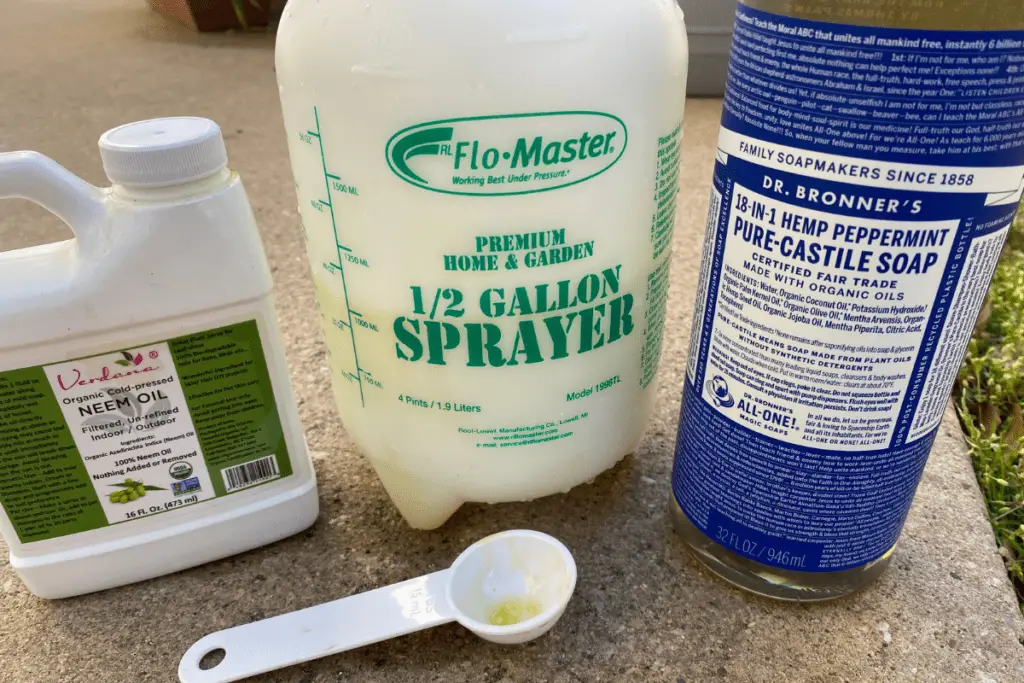
5. Apply Neem Oil as a Foliar Spray (Option 1)
In general, neem oil makes a great foliar spray. It’s safe for most garden plants, it repels or kills off over 200 pests, and it won’t harm beneficial pollinators, earthworms, or ladybugs.
Here are my recommendations for using neem oil effectively on mature plants, but when it comes to seedlings, I recommend a slightly more diluted recipe than the one you’ll find in that article.
Here are the steps I take to make such a recipe:
- Fill a ½ gallon (2 liter) garden sprayer with water. You don’t need to mix much neem oil, so a smaller .2 gallon (.75 liter) garden sprayer will work just fine since you’ll probably waste less neem oil this way.
- Add 2 teaspoons of cold-pressed neem oil per half gallon of water. For a .2 gallon (.75 liter) sprayer, you’ll need to add 1 teaspoon of neem oil.
- Add 1 ½ teaspoons of natural liquid soap to a ½ gallon (2 liter) sprayer and ½ teaspoon to a .2 gallon (.75 liter) sprayer. This serves as an emulsifying agent, allowing the oil and water to mix properly. Dr. Bronner’s Peppermint Castile Soap is my favorite emulsifier.
- Gently shake the garden sprayer, then pump until you’ve got appropriate pressure in the canister.
- Give the seedlings a light misting. Don’t soak them in neem oil spray. Unlike mature plants, which you can wash neem oil off of, seedlings are much more fragile.
- Don’t reapply neem oil for 4-7 days. It can take up to a week for neem oil to get rid of bugs, but if you’ve got aphids on your seedlings, this soapy neem oil solution will likely kill them in just a few days since aphids don’t do well when sprayed with soapy water, much less neem oil + soapy water.
As I noted above, neem oil won’t last very long once you’ve mixed it with water, so use what you can on your seedlings, then immediately use the rest as a soil drench somewhere else on your property.
6. Apply Neem Oil as a Soil Drench (Option 2)
If you’ve noticed the growth of mold or have had a plant die due to damping off disease, you should probably give your seeds trays a light soil drench.
To do so, follow the recipe above, but don’t mix your water, soap, and neem oil in a garden sprayer (since you won’t be spraying your plants). Instead, mix these ingredients in whatever watering can you use to water your seedlings, then apply with care.
For a soil drench, please don’t bottom water your plants. If the neem oil solution sits for too long, the oil and water will likely begin to separate despite the fact that you added an emulsifier, and the neem oil will begin degrading.
You should instead carefully pour the neem oil solution so that each seedling gets what it needs.
7. Evaluate and Track Results
Like elsewhere in your garden, I think it’s important to watch your seedlings carefully and take note of what happens in the days following a neem oil spray or soil drench.
Do your seedlings look any different? Are any particular seedlings or seedling varieties looking better or worse than before? Did the pests disappear? What happened to the mold? Have you noticed any signs of damping off disease?
If you take stock of your seedlings after a neem oil application, you’ll be able to evaluate how effective the neem oil solution was and determine whether you need an additional application or whether your plants seem to be thriving.
What Seedlings Should You Not Use Neem Oil On?
As I’ve noted in this article on neem oil and herbs, I’m very careful when it comes to spraying neem oil on plants that have wispy or delicate foliage.
With mature plants that have hardier foliage (like eggplant, peppers, and tomatoes), I’m less concerned about spraying them too much with neem oil. It’s possible to do so–and there are rare instances where you might have to rinse neem oil off your plants–but as long as you don’t apply neem oil when the sun’s out, you’ll be fine.
I’m not saying you shouldn’t spray certain seedling types with neem oil. What I’m suggesting is that, in general, some plants are more susceptible to shock and disruption than others.
If you’re concerned about it, you can start off with an even more diluted neem oil mixture than the one I recommended above, then evaluate the results and determine whether you need to strengthen the solution or not.
Final Thoughts
Neem oil is a versatile solution for all kinds of plant problems. It causes hormonal, developmental, and reproductive problems in many garden pests, yet it’s a natural insecticide that can be used on seedlings and mature plants alike, even just a few days before a harvest (although you’ll want to wash your veggies well if that’s the case).
If it seems, at first, that your neem oil isn’t working as you expected it to work, give it some time. It typically takes several days for neem oil to enter bugs’ bodies and begin causing cellular damage.
And remember: When spraying seedlings with neem oil, take it slow and track the results. There’s no need to get overly aggressive with neem oil–either making a too-strong concentration or spraying too much of it on your plants–so please follow the steps above and adjust what you do based on how your seedlings respond.
Further Reading
If you’re interested in learning more about neem oil, I recommend taking a look at these related articles:
